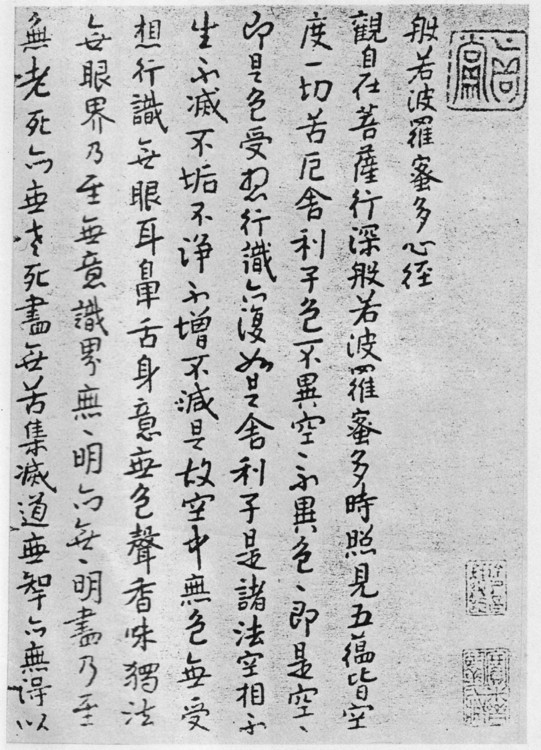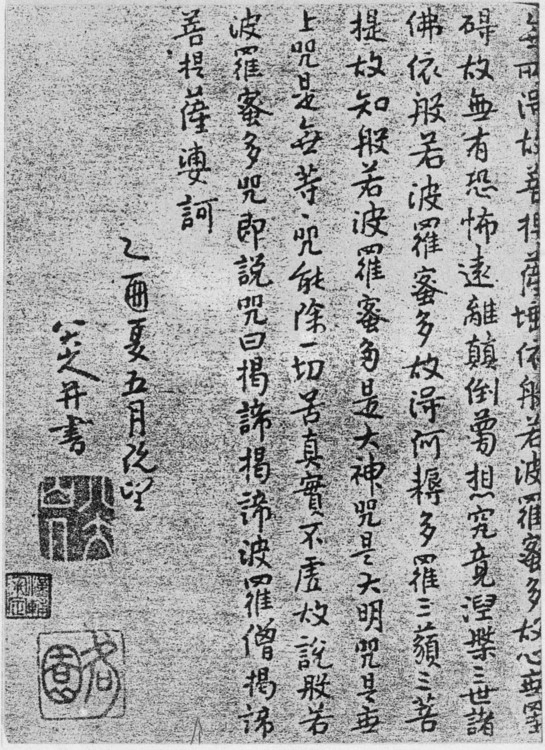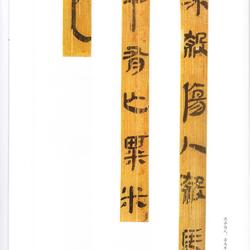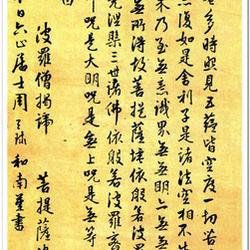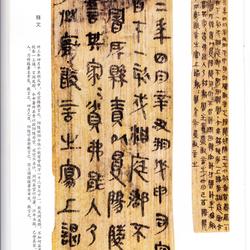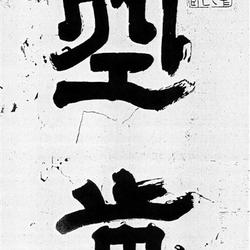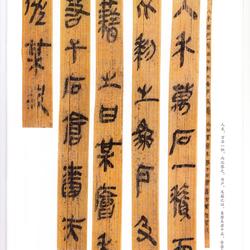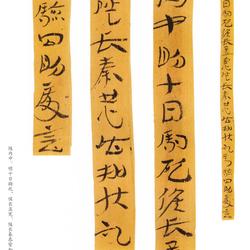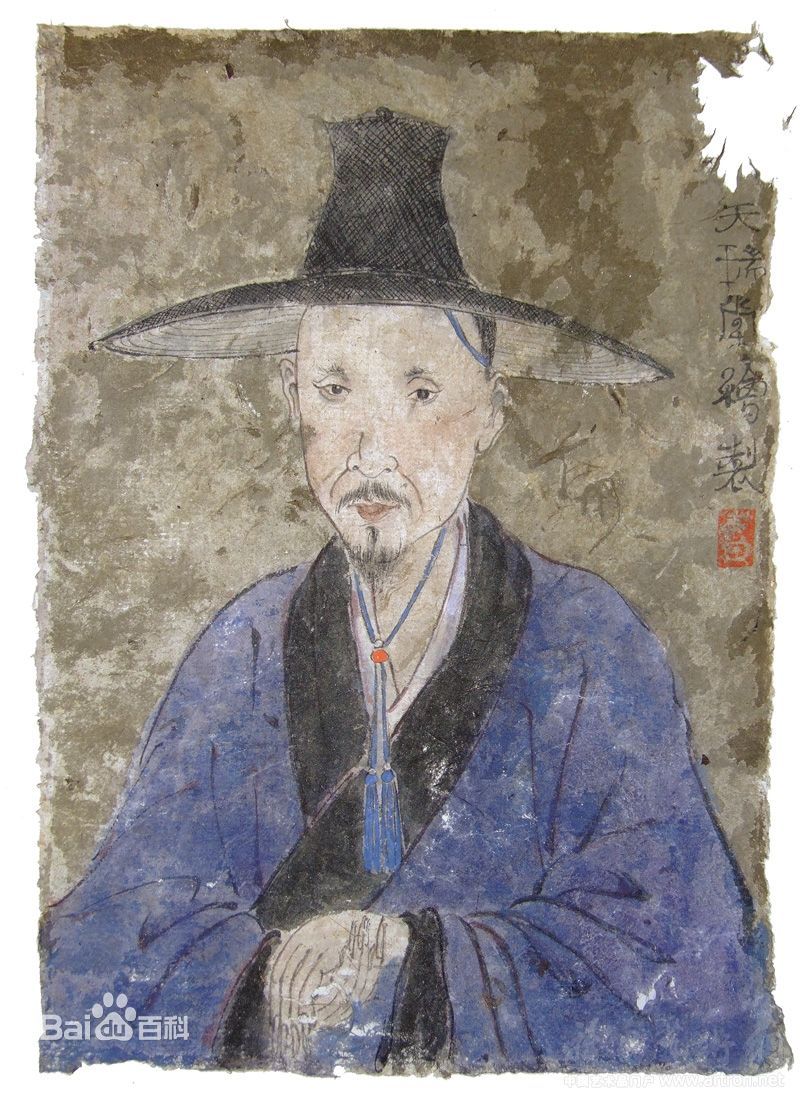 Bada Shanren (about 1626-about 1705), named Zhu Da, whose genealogical name is Tong* (* is Shanglinxiajin), was born in Nanchang, Jiangxi Province, and was a painter and calligrapher in the late Ming and early Qing dynasties.
Bada Shanren (about 1626-about 1705), named Zhu Da, whose genealogical name is Tong* (* is Shanglinxiajin), was born in Nanchang, Jiangxi Province, and was a painter and calligrapher in the late Ming and early Qing dynasties.
Bada Shanren was the ninth grandson of Mingningxian King Zhu Quan and one of the "Four Monks" in the early Qing Dynasty. After the fall of the Ming Dynasty, his country was destroyed and his family was destroyed. He felt sad and angry, and became a monk. His name was Chuanxi, and his name was Ren'an. He also used the names Xuege, Geshan, Geshanlu, Donkeywu, Renwu, Daolang, etc., and later entered Qingyun Pu as Dao. He is usually called Zhu Da, but this name was used for a short time. In his later years, he took the title Bada Shanren and used it until his death. When he signed his paintings, he often wrote "Bada" and "山人" vertically. The first two characters are similar to the character "cry" and the character "laugh", while the last two characters are similar to the character "zhi". To cry, to laugh, means to laugh or cry. He was loyal to the Ming Dynasty throughout his life. He regarded himself as a survivor of the Ming Dynasty and refused to cooperate with the Qing Dynasty. His works often use symbolic techniques to express his feelings, such as fish, ducks, birds, etc., all of which have their eyes turned to the sky, full of stubbornness. This image is a reflection of Zhu Da's own mentality. When painting landscapes, most of them take desolate, cold and desolate scenery, leaving mountains and rivers, and the feeling of admiration overflows on the paper. It can be said that "there are not many ink dots and many teardrops, the mountains and rivers are still the same mountains and rivers as before", "I want to see the people of the time interpreting the paintings, and a peak "He also wrote about the mountains and rivers of the Song Dynasty." It can be seen that Zhu Da attached great importance to painting and expressed his attachment to the old dynasty through calligraphy and painting. Zhu Da's brushwork is characterized by his unbridled and unbridled style, which is vigorous, round, graceful and elegant. Whether in large paintings or small pieces, he has a simple, smooth, clear and healthy style. The composition and structure are unconventional and seek to be complete despite incompleteness. Zhu Da's paintings had a great influence on later generations.
Zhu Da is good at flowers, birds and landscapes, and his flowers and birds inherit the tradition of freehand flower and bird paintings by Chen Chun and Xu Wei. It has developed into a broad-brush freehand painting method, which is characterized by exaggerating the painted flowers, birds, fish and insects through symbolic and allegorical techniques. With its unique image and concise shape, the image in the painting is prominent, the theme is clear, and even He painted the eyes of birds and fish as "white eyes facing people" to express his aloof and cynical character, thus creating an unprecedented flower-and-bird look.
His brushwork and ink are simple and bold, vigorous and forthright, dripping and smooth, his composition is sparse and dangerous, and his style is majestic and simple. He first learned landscape painting from Dong Qichang, and later from Huang Gongwang and Ni Zan. He mostly painted ink landscapes, with simple and vigorous brushwork and a desolate and lonely artistic conception. He is also good at calligraphy and is good at cursive and cursive calligraphy. Wang Xizhi, Wang Xianzhi, Yan Zhenqing, Dong Qichang, etc. use bald pens to write in a smooth and elegant style.
